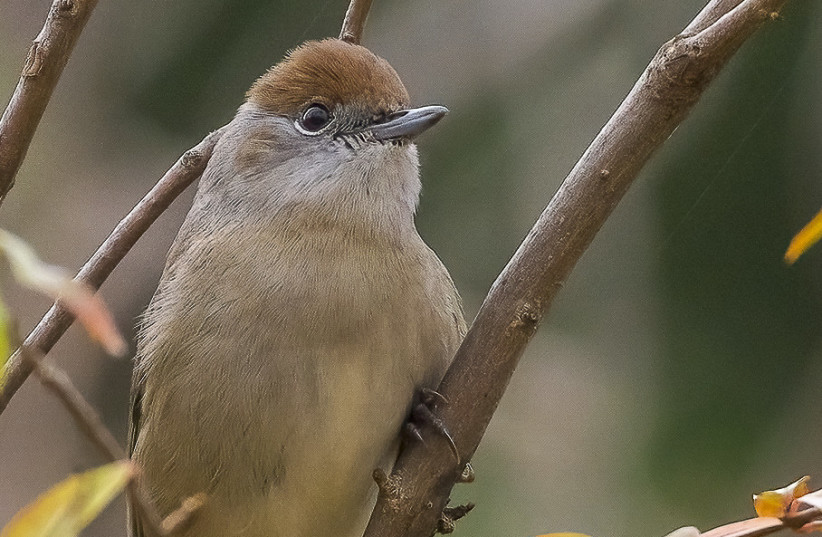Among the millions of migratory birds that fly over Israel on their way from Africa, where they spend the winter in Europe and western Asia, and back, thousands of migratory songbirds stop over to rest at the Nili and David Jerusalem Bird Observatory (JBO) near the Knesset.
Ornithologists at the JBO have identified five species of songbirds that stop over during their spring migration. While knowledge of birds’ breeding grounds in Europe is extensive due to a wide network of ringing stations and research, information about their wintering grounds in Africa is lacking.
A study conducted under the supervision of Dr. Takuya Iwamura and led by doctoral student Tal Raz from the School of Zoology and the Steinhardt Museum of Natural History at Tel Aviv University (TAU) was conducted there recently in cooperation with Environment Canada. The team found for the first time that the Eurasian Blackcap – the most prevalent migrant at the JBO and one of the most common in Israel – arrives from Ethiopia.
To minimize the knowledge gap for the five species of songbirds – the Eurasian reed warbler, Eastern olivaceous warbler, the Eurasian blackcap, olive-tree warbler and barred warbler that stop over at the JBO, the researchers used species-distribution models and stable isotope analysis.
The researchers focused on 1,500 observation localities of the species and environmental variables that can impact the species’ distributions such as rainfall and temperature, resulting in a range that represents the species suitable habitat in Africa.

The little birds are caught harmlessly in nets, examined and then released. In each naturally molted feather, there is a “hydrogen isotopic signature” that can indicate its growth location. To reveal the Jerusalem migrants' wintering location within the African suitability ranges, a sample collection led by Dr. Gidon Perlman and Dr. Yosef Kiat, was conducted there during the spring migration.
One feather grown in Africa during winter was collected from about 100 birds of each species. The missing feather did not hinder the birds from continuing their migration.
Hydrogen appears in nature in two ways – light and heavy. Each place on Earth has a certain ratio of these isotopes – the light and the heavy. The researchers have compared the isotopic ratio in the birds’ feathers to the occurring ratio in Africa, which is known to scientists.
Eurasian blackcap made its way to Israel from Ethiopia
The team found that the Eurasian blackcap comes from Ethiopia and nearby countries. They also found that the Eastern olivaceous and Eurasian reed warblers arrive from two regions, one in eastern Africa and the other in central Africa. They also discovered that early-arriving Eurasian Reed Warblers winter farther from Israel than late-arriving birds.
Their study, the team said, “will enable us in the future to understand the threats imposed on the survival of the birds in Africa and to protect them more effectively.”
Raz concluded that “migratory species face multiple threats to their survival, as they depend on several locations during migration – as opposed to resident species. Deterioration of only one of those locations can cause a decline in the population. Currently, great efforts are being made in Europe to protect migratory birds, but we need to remember that these birds spend many months migrating each year and are threatened by poaching, and in Africa, where habitat destruction danger their survival. To conserve these species, we have to identify key locations along their entire migration cycle, so we can estimate their threats and act to protect them.”
